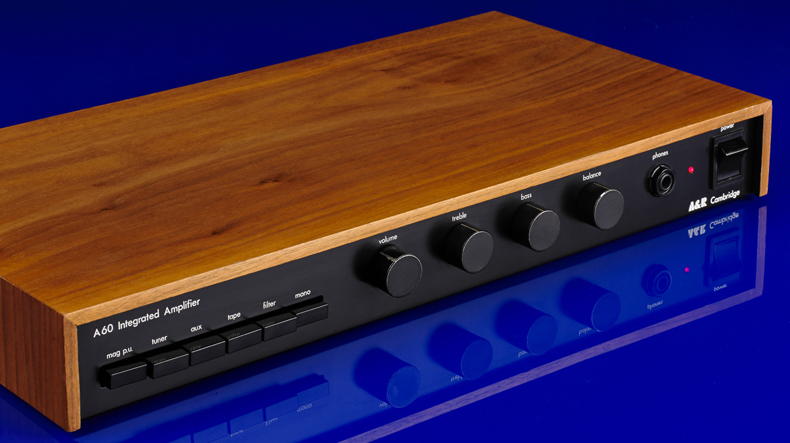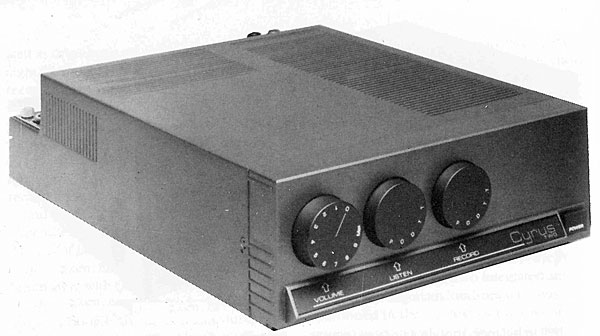The UK hi-fi market was a different country in the mid-1970s. Pioneer, Sony, JVC, Hitachi, and Wharfedale dominated the inexpensive end of the market, while KEF, Quad, Tannoy, and Celestion dominated the higher end. Even at the top end, names like Linn and Naim had yet to enter the vernacular. Japanese manufacturers were booming, and the country’s audio industry was entering its ‘harvest years’ of global dominance. Small UK experts (sound familiar?) such as Lecson, Nytech, and A&R Cambridge were pounding on the door looking in amid all of this…
Although it was a competitive market in which to introduce a new product, the brand new Amplification and Recording Company (Cambridge) Ltd. believed it had something unique to offer. In 1971, the narrative began in John Dawson’s apartment at Trinity College Cambridge. John began creating amplifier modules for pals with his friend Brian Whitnall. When classical guitarist John Williams came to town to perform Rodrigo’s Concerto for Guitar and Orchestra, he needed dependable, high-quality live amplification. John was more than happy to comply. Brian went away after that, but John later ran across Chris Evans at a Tape Recording Society gathering. In 1975, the two friends agreed to collaborate on a hi-fi amplifier, and the £140 A&R A60 was born in September 1976.
When they sold roughly 50 amplifiers in February 1977, the firm became limited. Despite its relatively conservative ‘English’ design (remember, this was the era of gigantic Japanese brushed aluminium monsters), its sound was on par with the greatest British rivals, and it was made to the same standards as any of the Japanese competitors. Indeed, in a world where a number of UK-designed niche products (names withheld to protect the guilty) were more likely to spontaneously self-combust than a Spinal Tap drummer, its unique selling point was that superior construction quality, resulting in the copper-bottomed reliability for which Arcam would become known.
Indeed, three factors contributed to this amplifier’s success: the aforementioned sonics and reliability, as well as a well-balanced feature set. While the Japanese battled for every square millimeter of their devices’ front panels with spun aluminium knobs promising one questionable function or another (‘mic mixing,’ etc. ), the new breed of Brits went in the opposite direction. With tone adjustments, balancing, a high filter, and a mono button, the A&R Cambridge A60 followed a very rational course.
Perhaps unsurprisingly, the amplifier was a huge hit, selling 32,000 copies a decade later. To the Japanese, this may seem insignificant, but for a niche hi-fi product from a start-up, it was incredible. One explanation for this was that the A60 had been incrementally enhanced every couple of years with small circuit changes, a switch from DIN to RCA phono connectors, a better phono stage, and beefier components. The logical next step was to build on its popularity, so the matching £190 T21 tuner and later the £655 C200/SA200 pre-power combo were released. It was a good amplifier with a lot of features, 100W RMS per channel, and a nice wood sleeve, but it struggled in what was already a Naim-dominated British high end market.
It was intriguing to see how A&R battled to move the brand upwards. Perhaps it was the fact that the A60 had cemented its reputation as the ultimate mid-price integrated that made the job so tough, as high-end purchasers demanded uniqueness in addition to excellent sonics. As a result, A&R expanded into new markets, introducing a line of phono cartridges that used the same magic formula as the original A60 amp. The £14.95 C77, £39.90 P77, and £69.00 P78 were A&R-designed, Japanese-built cartridges with replaceable styli, allowing for a simple and affordable upgrade route. The Arcam One was born after A&R tackled loudspeakers. It was a high-end stand-mounter with an A&R designed, Elac-sourced 200mm Cobex mid/bass unit and an A&R modified 25mm Vifa tweeter that cost £299. Despite being successful mid-price designs, they failed to grab purchasers’ minds in the same way that the A60 did. For A&R, it was back to amplifiers.
The ‘halo effect’ of the A60 was so strong that it propelled the newly renamed ‘Arcam’ into the budget integrated market in the early 1980s. In the same manner that the A60 dominated the sub-£250 mid-price segment, NAD’s venerable 3020 was dominating the cheap segment. Arcam decided it wanted a piece of the high volume budget action after its lukewarm success in high end amplification, and the Alpha One was born. It cost £129 and had a lot in common with the A60, including a similar sound. The obvious cost-cutting measure was the use of low-cost molded plastic fascia, which would never be tolerated today. Nonetheless, the Alpha was one of the greatest for the money, so much so that it eclipsed its older sibling. The A60 was phased out in 1988, to be replaced by the Delta 60, which was far more swish. Still, there appeared to be something missing. With one notable exception, the Audiolab 8000a, which is (as they say) another tale… No other amplifier has ever truly captured A&R’s integrated original’s magic formula.
Despite continuous tweaking over the course of its twelve years, this amplifier’s core nature maintained — smooth and powerful yet musically enjoyable. Although everyone who had heard it stated it sounded louder, the A60’s moniker was designed to relate to its rated power (2x30W RMS). It was big-hearted and bold, but never rude or abrasive like some of its Japanese competitors. It is, after all, authentically English — capable, polite, and refined. Although it lacked the sledgehammer strength of pricing rivals like Pioneer’s SA-7800 integrated or Naim’s 42/110 pre-power, the bass was robust and tuneful. The midband was open and detailed, with just a hint of ‘brightly lighted’ to assist it picture confidently in front of the speakers’ plane. Despite the prominent midband, the treble was pleasantly rich, never becoming fatigued. It had a good rhythm, though not as good as Naim’s Nait, and its useable power reserves gave it good dynamics by class standards. Overall, it was a versatile amplifier that could be used with everything from the earliest Spendor BC1s to later Linn Kans. A stylish phono input rounded off a fantastic package.
A&R A60s are extremely affordable these days, maybe due to the outmoded appearance, making them excellent budget buys. They’re all the more convincing as a purchase because of their high build quality and good company support. Early variants with DIN connections can be had for as cheap as £25; final run-out models with black wood sleeves in pristine condition and the original box and manual can be had for as much as £125. Both versions sound good, with the newer versions providing a little more clarity, dynamics, and bass grip.







